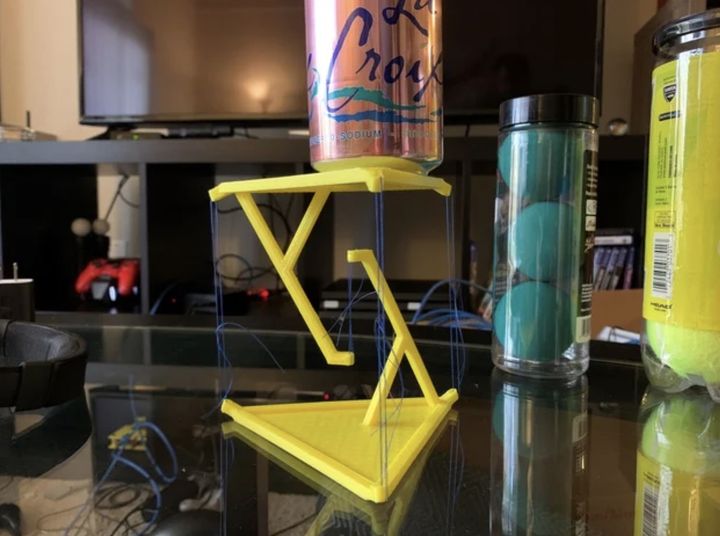
This week’s selection is the Impossible Table by Austin Steingrube.
Maryland-based Steingrube’s design is certainly eye-catching, as at first glance it appears to be defying the law of gravity. It is a small table, to be sure, but the legs don’t seem to reach the ground! You can even put something on top of the tiny table, as you can see in the image at top.
How on Earth can this possibly work?
There’s a clue if you look very closely at the image, as you’ll see a series of tight strings at the corners of the table. These strings hold it all together by means of tension. Steingrube explains:
“This is a hanging table top where tension forces are used to keep the table upright and balanced instead of compression forces on standard legs. The end result is an object that seems to defy gravity and physics.”
And:
“One of my friends told me this type of object was called a ‘tensegrity’. After doing a bit of research, it turns out there is a whole class of objects that use this principle. Very interesting stuff!”
Aha! Wikipedia defines a Tensegrity as:
“Tensegrity, tensional integrity or floating compression is a structural principle based on a system of isolated components under compression inside a network of continuous tension, and arranged in such a way that the compressed members (usually bars or struts) do not touch each other while the prestressed tensioned members (usually cables or tendons) delineate the system spatially.”
While this is a 3D print, specifically of only two parts, the top and bottom, the bulk of the work is going to be stringing this thing together. Steingrube explains the assembly process involves precise measurements of the strings, and likely requires an assistant to hold things together while you tension the strings.
Another aspect of this model is color. To maximize the shock and awe of initially seeing this curious object one must ensure the strings are as invisible as possible. This is best done through a careful choice of color, both of the printed parts and the strings.
In the image above Steingrube has used yellow for the model and what looks like a dark gray for the threads. It’s possible to make the strings less visible by ensuring their color matches the expected background. That’s another color consideration.
The Impossible Table falls into a class of 3D models that provide optical illusions. I really enjoy these prints as they can be used to amaze visitors, and that’s always a good thing.
Via Thingiverse
